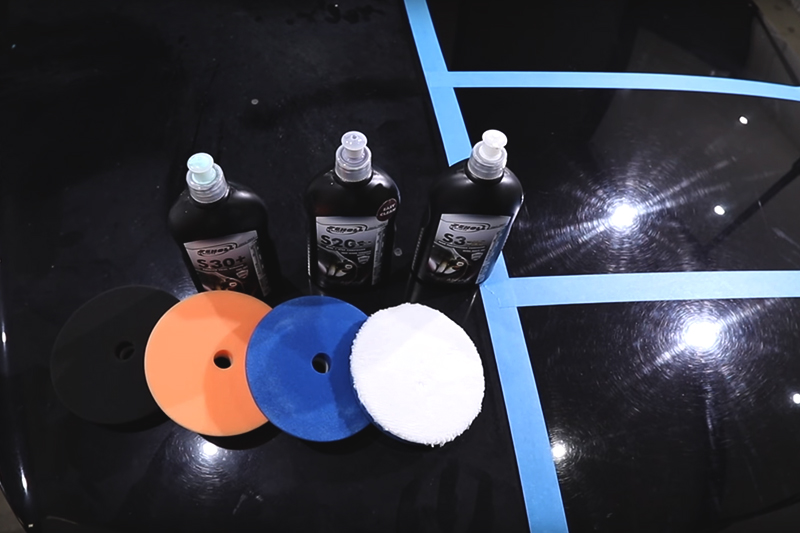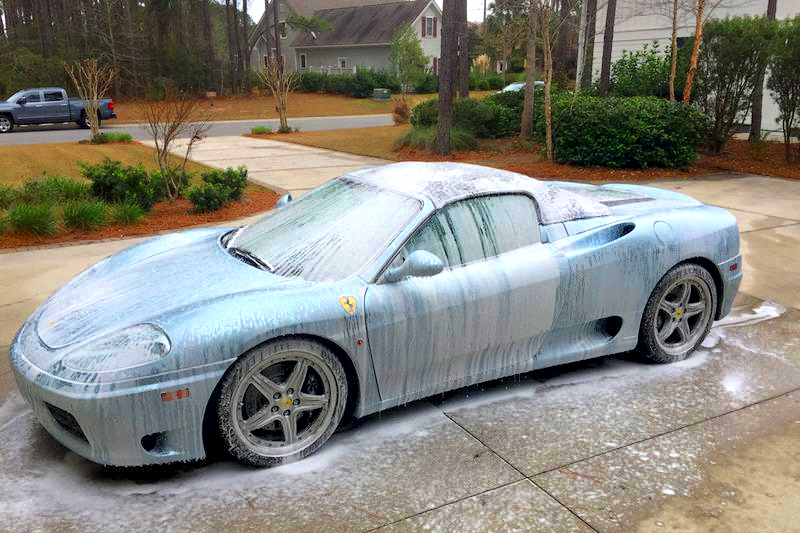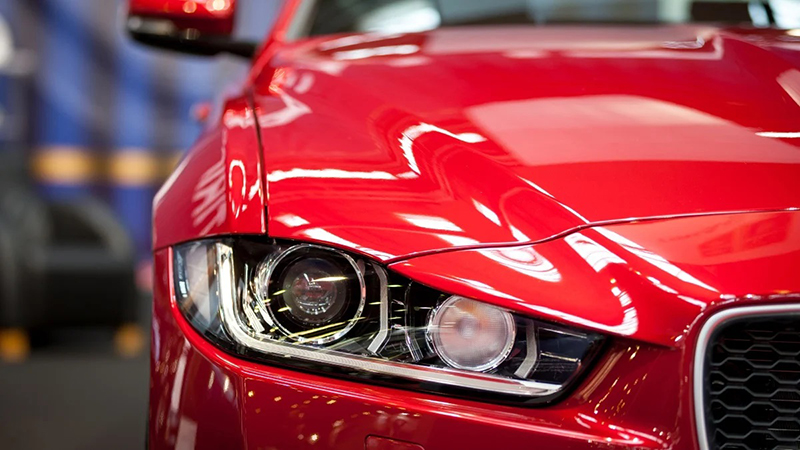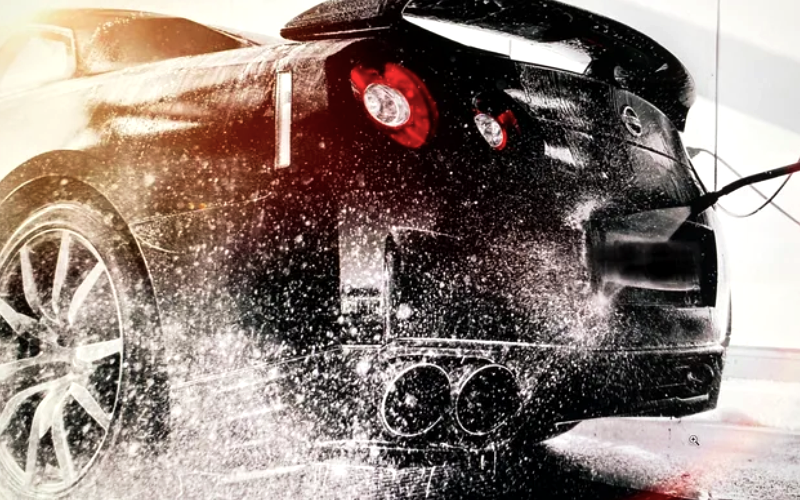They are gross and pathetic – There is nothing to spin when it comes to indicating car paint stains. Undoubtedly, your car’s paint work is expensive to restore once it is completely damaged. However, the key thing to notice here is that most of the irreversible car paint work damage beings from reversible car paint stains. As a responsible car owner, it is your responsibility to do everything you can to remove and prevent car paint stains.
Did you know that Americans spend hundreds to thousands of dollars on single car paint restoration? The annual car paint restoration is way higher but the good news is that you can save yourself from becoming a part of the figures by adopting simple car paint stain removal techniques.
When we buy a new car, there are many features that attract us. From design and build to ADAS and safety; from upholstery and trunk space to touchscreens and audio systems. One more fundamental thing that never fails to catch our eye, however, is a car’s paintjob.
The paint is a key focal point that adds beauty, character and sometimes dynamism to the car. Whether you go for metallic paint, two-tone design or some other style, the paint really is the “face” of your vehicle. It is, therefore, often instantly noticeable when some kind of defect occurs that impacts the paint.
Wondering how to restore your car’s exterior by removing car paint stains without having to drive to the nearest car wash? Here is an overview of everything you need to know?
What are Car Paint Stains?
Panic is the first emotion a devoted car owner feels on the very sight of a hideous car stain. Despite all the ugliness and worry, it is important to acknowledge that there is very little to worry about car paint stain damage in most of the cases.
The explanation of this statement lies in the fact that most of the car stains are either only-surface deep or etches on the clear coat of the paint rather than the actual paint coat. In other words, your SUV, Car or truck paint stains are only as deep as clear coat and there is nothing to worry about the actual paint coat expect under a few unfortunate circumstances.
Although the extent of damage of car paint stain is usually reversible, it is worth noting that some car paint stains are way harder to remove than the others. Therefore, you need to develop a good grasp on the understanding of car paint stain types and how to remove them to ensure safe results.
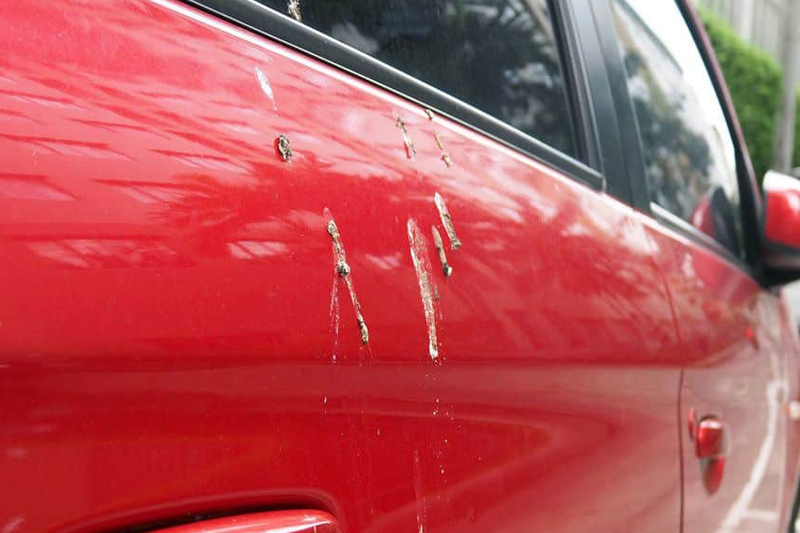
Car Paint Stains Simplified
In simple words, car paint stains are not found on the actual paint rather they are found on protectants and clear coats. Stains are caused by outside sources and can occur on parts like plastic trim, headlight covers and convertible tops.
Getting the equipment for car paint stain removal
- You can use degreasers, cleaners or simple car care products to get rid of stains.
- Most of the car dust stains can be removed using a duster
- Get a bucket, shampoo, sponge and microfiber clothes for washing and drying of car for paint stain removal
- Find the best stain cutting and car paint polishing compounds for best results
- Use electric orbital polishers to cut through the protective coat and get rid of stubborn stains
- Choose the best waxing compounds to fix the protective coat and even out the paintwork
Scratches in Car Paint
Scratches of any size or depth form an unsightly blight on your paint’s surface. They can occur for myriad reasons, mostly accidental, but on occasion possibly deliberate. However, they surface, they are unsettling, and potentially expensive to have fixed by a mechanic or other professional specialist.
Minor scratches can be dealt with using handy tools like car paint touch up pens. Such scratches typically need relatively few stages for repair. After thoroughly cleaning the affected area and removing all contaminants, you can use the touch up pens — primer, base coat and clear coat — to restore the paint in layers in a controlled way. After a final polish and buffing, it will look as good as new.
Deeper, more serious gashes in the car’s paint or bodywork may well require more specialist attention. Sometimes attempting DIY solutions on very serious car paint problems can just serve to make them worse. Use your best judgement.
Chipped Car Paint
If you’ve ever looked at your paint and noticed a tiny imperfection in it, you might look closer, or rub it with your finger to confirm what the problem is. Very often, that problem might be a chip in the paint. They show up more overtly on light-colored cars, since the contrast becomes more obvious. Paint chips need some careful attention to solve, but it doesn’t have to be complicated.
Similar to scratches, a minor chip can be fixed by first thoroughly cleaning the area, and then sanding it down until it’s smooth and contaminant free. You can then use touch up pens to fill in the affected area in thin layers until it’s restored. After polishing and buffing, it will be as though no paint was missing at all.
Also similar to dealing with scratches, serious flaking and degradation to the paintwork is harder to solve by yourself. If you have knowledge and experience, that’s one thing, but poorly executed efforts might make things worse.
Discolored Car Paint
Sometimes the paint you have doesn’t chip or get scratched, but instead simply starts to lose its splendid color. That deep, rich glow that so allured you in the showroom can fade over time to a rather lustrous and uninspiring color that’s impossible to make attractive. The biggest causes of discoloration include: air pollution, salt, bird droppings, UV rays, harsh chemical cleaners used in place of dedicated car care products, and more.
There are three good habits you can employ to better protect your paint from the ravages of UV rays and the other factors that seek to diminish its color.
1) Keeping the car out of direct sunlight as much as possible, for example keeping it in the garage or a car port overnight, and parking in a parking structure during the daytime. Trees may provide some shade, but they bring with them their own problems including sap and other substances that can be equally as damaging to your paint.
2) Maintain a regular cleaning schedule to ensure that any harmful substances are removed from the car before they can do any damage.
3) Make use of sealants and synthetic waxes with built in protections like anti-UV and hydrophobic qualities that cause all dirty water and other liquids to quickly run off the car’s surface before their contaminants can bind with the paint.
Types of Common Car Paint Stains
Car paint stains are classified on the basis of their source, extent of damage, appearance and ease of removal.
There are many things that would seem obviously bad to put directly onto your car’s paintwork — paint thinner, for example. There are things like harsh industrial chemicals, acidic materials and other things that we intuitively know can’t be good for our car.
The interesting thing is that it doesn’t stop there at all. There are additional things that are very bad for your car’s paint that you might not have realized were. Below are some examples:
Fingerprints
We all hate strangers and annoying children who couldn’t help but paint graffiti on your car’s exterior. Don’t we? Little do these people know that they are not only embarrassing everyone around them but also causing damage to the vehicle’s paintwork. Finger impressions rub dust and debris all over the paint as well as serve as sticky surfaces to invite dust retention on paintwork. Ultimately, you end up with lasting blemished that sullen the look of your car and require a lot of time and effort for their removal.
Paint Oxidation
Although you may think that paint oxidation has nothing to do with car paint stains, let us mention that paint oxidation is one of the leading causes of car paintwork damage. Oxidation refers to the gradual process of rusting and metal damage which usually begins with a small dent or scratch. These dents and scratches make their way down to the clear coat, damage it and eat away the paint surface is the car’s body is exposed to water, oxygen or salt. In worst case scenarios, ugly corrosion marks can appear on your car’s paintwork and lead to body panel and chassis damage.
Paint Swirl Marks
Are you familiar with appearance of scratches on your paintwork? Scratches are also referred as spider webbing or paint swirls. Although paint swirls are small, they are much visible as an etching on the clear coat. These marks can be very light or aggressive depending upon the frequency of scratches and presence/absence of paint protection sealants, waxes or ceramic coating.
If you are someone who uses third-grade or non-recommended towels to wash or dry your car, stop it immediately as they are the causes of pain swirls. You would be surprised to know that mainstream car wash stations also use damaging material leading to spider webbing on your car.
Stone Chips
Lose stones and pebbles are one of the biggest offenders of car’s paintwork as they hit and chip the paintwork, leaving long-lasting, ugly paint stains. Your car’s bumper and bonnet are two of the spots which show high-levels of damage and paint stains caused by stone and pebble chips.
Tree Sap Stains
Did you ever notice glue-like spots on your car’s paintwork? Well, that’s what we call tree sap stains are they are a gift from none other than Mother Nature. If you are someone who parks his car out in open, under the trees, the sap from the tree branches and trunks falls and lands on your car’s paintwork. The tree sap’s composition is acidic due to the presence of organic acids. This acidic sap penetrates the clear coating and burns it, leaving difficult-to-remove etching on the clear coat.
Road Salt
We’re not talking about the kind of salt you put on your food here — though that, too, is not good for your paint. We are referring specifically to the salt laid down on the roads in the winter to melt ice and snow. This is a much harsher and thickly applied substance that easily finds its way onto the car when you’re driving. It especially affects the lower areas around your doors, sides and bumpers, causing corrosion and rust.
Yes, even things that are designed to help improve your driving experience can be detrimental to your car’s paint. If you’ve been driving on a recently salted road, you need to rinse off the tires, side panels and bumpers of your car to clean off this road salt.
Bird Droppings & Bug Splatters
Birds and bugs probably hate cars as it is evident from the frequent bird droppings and bug splatters you see on your vehicle’s paintwork. Since these droppings are excreta of bugs and birds, these fluids contain acidic contaminants which lead to etching on clear coat of cars. In the presence of excessive heat and direct sunlight, the acid attack is accelerated leading to more damage to your vehicle’s paintwork.
A common and unwelcome sight when you return to your parked car or head out on your morning commute. The temptation is to always deal with bird droppings later. Many assume that, unattractive and disgusting though they are, they aren’t really doing any harm. This is where you’d be wrong. They are very acidic and can leave permanent damage on the paint if not attended to in a timely manner.
Water Stains
Water spots are rampant and they make your car look ugly. Your car’s paintwork may retain water droplets from the last wash or rain. Instead of etching into your car’s clear coating, water stains stick on the coat and give a hideous appearance. The presence of mineral deposits in residual water spots leads to water spot stains. The good news is that you can easily remove car paint water stains using a chemical cleaning compound and a microfiber towel.
Water Spots have three types
- Type One – Hard Water Spot
- Type Two – Mineral Deposit Spot
- Type Three – Etched Spot (due to presence prolonged mineral deposit spots)
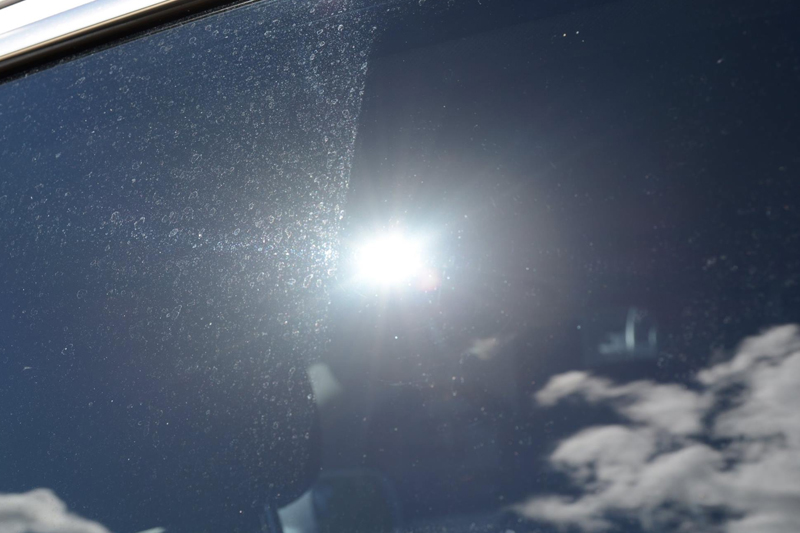
Gasoline Fuel Stains
How often do you clean the residual fuel after getting a tank refill? Most of the drivers overlook this type of car paint stains but it is necessary to pay special attention to fuel stains. Fluids like engine oil, brake fluid, petrol and diesel leads to damaging paintwork if they come in contact with the clear coat for long periods of time. The worst part is that fuel stains tend to be impossible to remove if you leave them as is for longer durations.
The very stuff your car needs to go? Yes, it sounds odd that such a critical automotive component would be so detrimental to another part of the car. When you’re done filling up at the gas station, it’s easy for drips of gasoline to escape from the nozzle as you remove it. That in itself isn’t so worrisome because it will quickly evaporate, but when it does it can leave behind nasty marks that are no good for the paint’s clear coat. Simply using natural wax or a synthetic sealant will help to mitigate this possibility. You could also just be more mindful with the gas pump.
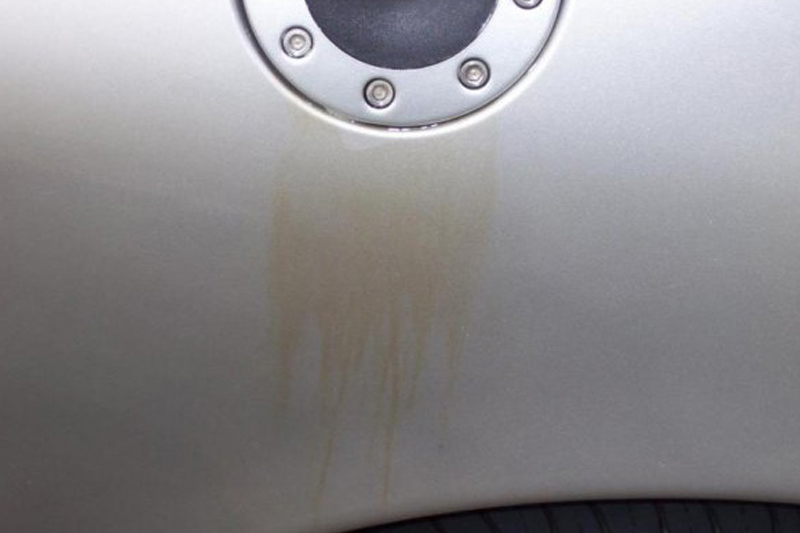
Dust Stains
One of the most neglected yet commonest forms of car paint stains are dust stains. If you fail to wash your car on time repeatedly, it leads to dust buildup on the clear coating. As a result, it dulls the paintwork’s finish and leads to abrasion on clear coating. Dust stains are dangerous as they can cause visibility problems.
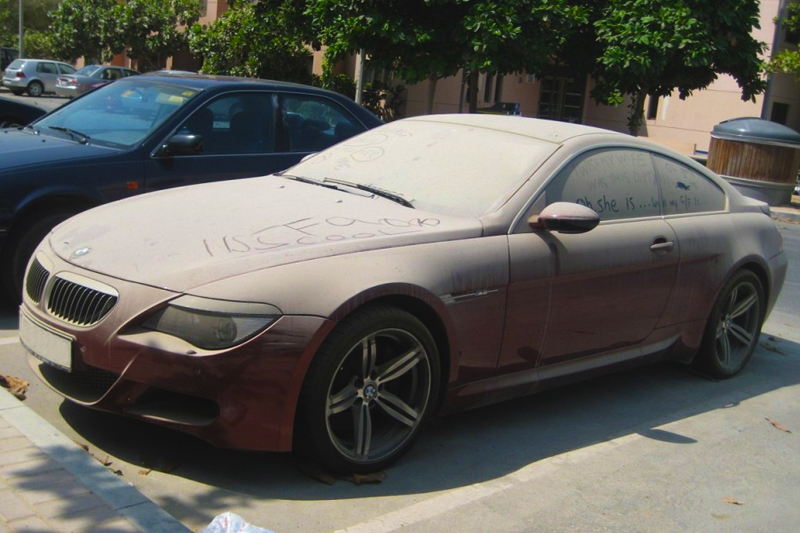
Factors that determine car paint stain removal
When it comes to car paint stain removal, the only problem is that there is no hard and fast rule to remove stains of a particular kind. Although the basics of paint stain removal technique can be validated, the process really depends on multiple factors including:
- Source of the Stain: Contrary to non-acidic stains, Acidic stains require paint correction as they cut through the clear coat. Be careful not to cut past the clear coat into the paint layer while performing paint removal.
- Duration of Stain Retention: Stains which are only a few days old can be removed by a simple car wash and dry process. Older stains require intense removal methods.
- Personal Experience: In most cases, choosing a paint stain removal method is done on hit and trial basis. If you something works well for a certain kind of paint stain removal, go for it. Otherwise, take help from other’s experience research.
Methods to Remove Common Car Paint Stains
Once you have understood the different types of car paint stains and basics of car stain removal factors, it is time to learn about the different ways to remove car paint stains. Here are some common car paint stain removal methods that will help you in doing the job
Wash and Dry the Vehicle – Remove fingerprints and spills
Before you go head-on into the details of car paint stain removal, try simpler technique like car washing and drying. A traditional bucket wash is good enough to get rid of a considerable number of car paint stains. If not, car wash can always provide you with a clean canvass so you can evaluate the residual stains and choose a better-suited car paint stain removal technique. Here is how you can perform a bucket wash:
- Wash your car in sections such as wash the driver quarter panel, doors, hood, bonnet, rear deck, wheels and rims one after the other.
- Start washing your car from top to bottom. It will help you in creating a downhill flow for the dirt and grime you remove from the top.
- Give your car a final rinse to remove excess soap
Drying the Car after washing
Once the car wash is done, the next thing to do is dry the exterior of the car. Make sure not to park the car to dry on road and do not use compressor hose for car drying. Use scratch-resistant materials to dry the car and apply side-to-side cleaning action. Avoid circular cleaning action.
- Use a chamois or a microfiber towel to dry the car
- Move side-to-side action to dry the car stepwise from top to bottom
- Use multiple drying towels and replace the wet towels with dry ones frequently
White Vinegar Spray – For water Spots and Bird Droppings
White vinegar is loved by many car owners given the fact that it cuts through the stains and cleans your car’s paintwork without damaging anything. Preparing a white vinegar solution is one of the most hassle-free and effective ways to remove any kind of car paint surface stains.
- Mix white vinegar and distilled water in equal ratio in a spray bottle to prepare a good stain removal mixture.
- Fill the bottle, close it and shake it to create a uniform mixture of white vinegar and water
- Spray it on the paint stain and let it sit for half a minute so that the mixture can mix with and cut the stain
- Use a clean microfiber towel and slide it gently on the vinegar-covered stain and remove it instantly
- If the stain resists, spray and rub with the towel 2-3 times more
Perform Clay Bar Treatment
For those of you who are unfamiliar with this car paint stain removal method, let us explain you that involves the use of a clay bar or a clay mitt. This process is also commonly referred as car paint claying. You will need:
- Automotive-grade clay
- High quality Lubricant Spray (basically concentrated and thicker car wash soap mixture)
First you will have to thorough wash your car clean and then all you need to do is slide the clay bar/mitt slowly and evenly all over the car paint surface. It will help you in getting rid of any residual stains and imparting a newer look to your car’s paintwork. Below is a good video demonstration.
Do Paint Correction to Restore Car Paint
When none of the above-mentioned techniques is successful to remove a stubborn stain, it is time to switch to a promising paint protection treatment. You will need to get a:
- Paintwork polishing compound
- Electric powered orbital polisher
- Microfiber applicator pad
If you are someone who is familiar with paint protection, you can relate to the fact that it works on hit-and-trial basis. You will have to switch between different techniques if the first ones do not work. With a little practice and patience, you will be able to remove the stubborn car paint stain by using this method.
Car Paint Stain Prevention tips
Car paint stains are 100% avoidable. It is a relief considering that no matter how much you take care of your car, you will end up with different kind of paint stains. Here are some additional tips which can help you in car paint stain prevention:
Nano-Coating
Did you know that your car’s clear coat has minor ridges and grooves which are susceptible to retaining corrosive materials, minerals and other types of contaminants that cause staining? Nano-coating can help with that. It uses an advanced nano-technology which fills the microscopic spaces in your car’s protective coat, thus, hardening it. In return, you get a sacrificial layer which is resistant to stains from tree sap, hard water, bug splatters, bird droppings, fuel stains and dust abrasions. It prolongs the longevity of your car’s clear coat.
Hydrophobic Coats
You can use different car care products like car wax, car paint sealants and ceramic sprays to create hydrophobic layers over the clear coat of your car. It protects the clear coat and eliminates the chances of car paint stain retention.
Use Car Covers
One of the cheapest ways to protect your parked car from paint stains is to keep it covered by using a water-resistant car cover. You can spend a few bucks on car cover and protect your car from external sources of stain for years to come. Another great tip is to park your car under a shade or hood instead of parking it under direct sunlight, excessively hot places or under the trees.
Common Car paint maintenance mistakes to avoid
As a car owner, you have to take care of a lot of things. Cars are big assets and you must do everything in your power to preserve its value and prolong its lifetime. A good car owner is someone who is a good car caregiver. Although you can hardly retain the show-room finish of your car after years of usage and maintenance, you can adopt certain practices to preserve the car’s paintwork and bodywork by protecting it from stains and rust spots.
Since we have established that it does not always take vandalism to damage the look of your car, it is time to pay attention to few common mistakes people make with respect to car paint stains. Here are a few things to avoid for proper car paint maintenance:
Neglecting dust removal
Your car is the reflection of your personality as it is one of the things under your responsibility and care. Apart from maintaining your impression by being responsible, timely dust removal works to protect your car from stains and damage. If your car dust removal is long overdue, it can lead to worse case scenarios like rusting of bodywork and chassis.
It is recommended to wash and shampoo your car to remove old dust or use a duster to sweep off recent dust layer. Fortnight car wash is recommended during autumn and winter season to eliminate chances of damage caused by dust stains on car paint.
Prolonged sunlight exposure
Did you know the UV rays from sunlight are your car’s biggest enemy? If has been proven that prolonged exposure to direct sunlight causes cracking of car’s paintwork due to accelerated kinetic energy and UV damage to car paint compounds. Eventually, direct and prolonged exposure to heat or sunlight will lead to fading of car paint and accelerated stains on the car. Try to park, wash and wax the car in a shady place which does not receive direct sunlight.
Incorrect cleaning
There is absolutely no benefit of sticking to a regular car wash if you are using incorrect cleaning techniques and equipment. In fact, improper cleaning is way more hazardous to your car paint rather than neglected car cleaning. Here are a few things to avoid to get proper car cleaning results:
- Avoid the use dirty wash accessories. Use a clean microfiber cloth or sponge to dry the car. Never use dirty accessories as they can easily transfer dust and abrasion rather than the reversing the damage. Clean your accessories after every use and use fresh cloths for every car wash.
- Avoid making any shampoo errors. Use just the right amount of shampoo which neither damages the paintwork nor leaves any residual stains or dirt.
- Do not make any waxing errors. Avoid waxing your car under direct sunlight as the heat will cause wax hardening before you buff it off. Hard wax will scratch the clear coat and increase stains rather than fixing issues.
Paint Defects During Repair
Problems with your car’s paintwork go far beyond just chipping or scratching. Many of the most common issues come about now when the paint is damaged, but when you try to repair it. Here are some of the most common paint defect types that occur during touch up or repainting:
1. Fisheyes
This happens when you are applying primer to your car’s surface in preparation for a touch-up or repainting job. As the name suggests, the primer forms kinds of circular “fisheye” shapes on the surface that seem to stare up at you saying, “uh-oh, something is going wrong!”
These fisheyes can be avoided quite easily by cleaning the surface more thoroughly to remove any contaminants. The eyes form when the primer comes into contact with things like wax and grease that hasn’t been properly cleaned. The first stage of touch-up painting or repainting is a smooth, clean surface free of any contaminants.
2. Sand Scratches
These streaks and lines show up in your paint film any time that you don’t properly sand paper in the repair process. For instance, let’s say you half-heartedly sand the body or primer, or do so prematurely, then the results can be these unattractive streaks. Always let your primer/paint cure before you go to sand the area, and ensure you sand evenly and thoroughly as needed.
3. Orange Peeling
Car paint isn’t just something you can slap right onto a car’s surface. The area has to be primed, and the paint has to be properly thinned. Orange peeling is a problem that occurs when the latter of these two things has not been done. When the paint is too concentrated, it will leave the surface looking like its namesake. You can solve this problem with 1200-grit sandpaper and some rigorous buffing, but it won’t occur at all if you take the time to properly thin the paint and apply in thin layers.
4. Crow’s Feet
These are a kind of cracking that can happen in the topcoat. It occurs in several ways, the most common of which is being too hasty in your coatings. Let’s say you’ve just put on a layer of primer, but you’re very eager to move on to the next stage. You think it won’t hurt to “help along” the primer drying by using a heat gun or hair dryer. Pushing your primer and paint too much will never yield good results. Be patient!
Another way that crow’s feet can happen is when you apply too thick a film coat or use too much hardener. You have to follow instructions as written on your chosen paint/primer products and don’t assume that you know better or that your car is so different.
5. Air Trapping
This one may happen to those working with spray paints rather than a touch-up pen or micro brush. When respraying a surface, very small air bubbles sometimes rise up to the paint’s surface. Once there, they can pop, leaving a kind of pock mark on the paint — very unsightly! Again, the cause is quite simple and requires minimal action to avoid.
If you see air trapping, it’s likely you’re standing too close with your spray gun/nozzle, and you are likely using the wrong air pressure. Follow instructions and use the recommended pressure and distance for the paint you are using.
Fortunately, you can fix the problem and start again by just sanding it down with 1200-grit sandpaper.
Are you ready to eliminate paint stains from your car? Take help from the above-mentioned points to get the best results.
Car Paint Needs Care and Attention
In the end, car paint is just another part of your car that needs proper care and maintenance. It may not be mechanical like the engine or suspension system, but it still needs what it needs — cleanliness, protection, and to be kept free of harmful substances. Wash and wax your car regularly, and consider protective coatings like sealant, ceramic coating or a vinyl wrap to add robust protection to one of your car’s best assets. Look after the paint, and its glory will always shine through.
